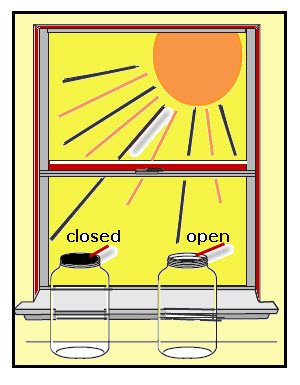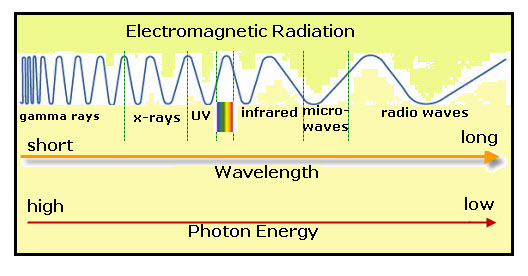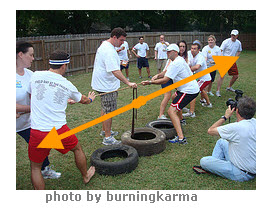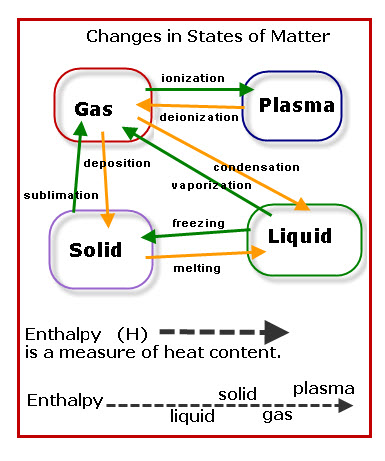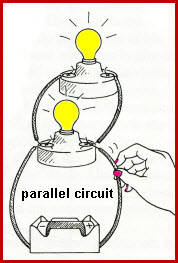A model represents something. For example, a model airplane is a replica of some real airplane, but much smaller. A model can also represent how something behaves, such as a closed jar represents how Earth’s atmosphere keeps Earth warm. This is done because the atmosphere, a blanket of air that surrounds Earth, traps heat leaving […]
Forces: Bouncing Ball
Question: Why does a basketball bounce? Answer: Let’s assume that the ball is dropped, so that the only force on the ball is gravity. All moving objects have kinetic energy. When the ball strikes the floor, the part of the ball against the surface is flat, and the space inside the ball is smaller, which […]
Black Light
Question: How can light be black? Answer: I assume that you are referring to the light emitted by a black light. The light is not black in color. In fact, there is no such thing as “black light.” The color black is produced when all visible light striking a material is absorbed. This means that […]
Photon
Question: What is a Photon? Answer: Electromagnetic radiation is a form of energy that is released by an atom. This energy is made up of many small particle-like packets that have energy and momentum but no mass. These particles, called photons, are the most basic units of electromagnetic radiation. Electromagnetic radiation is often referred to […]
Physics: Friction
The Italian scientist Galileo Galilei (1564-1642) reasoned that things eventually stop because of a retarding force. He thought that without this force, objects just kept on doing whatever they were doing. In other words, if an object is moving, it would keep on moving. Unlike most scientists of his day, Galileo based his conclusions on […]
Physics: Newton’s Second Law of Motion
The photo shows two groups, each pulling in a different direction on a rope. When the combination of forces on each side equal, the forces on either side are said to be balanced. The ribbon tied in the middle of the rope indicates motion as well as the direction of the motion. If one team […]
Physics: Newton’s Third Law of Motion
Hero’s Engine Newton’s third law of motion says that for every action there is an equal reaction in the opposite direction. The spinning cup in the diagram is an example of this law. The Action-Gravity forces the water in the cup out of the straws in the cup. The direction of the water is determined […]
States of Matter:Enthalpy
The three states of matter that are most often studied are gas, liquid, and solid. In the diagram is a fourth state of matter, plasma, which is much hotter than the gas it forms from. Notice that that only plasma can only be formed when a gas is ionized (changed into charged particles). To make […]
Physics: Series Circuit
Question: What is a series circuit circuit? Answer: First, let me define a few words: electricity: Electrical energy circuit: Path through which electrical energy passes. series circuit: A circular path through which electricity passes. As defined, a series circuit is one large circle through which electricity passes. Look at the diagram of the series circuit. […]
Sound:Spoon Bell
Spoon Bell
A fun sound experiment with ideas for changing one variable at a time to discover their effect on the resulting sound.
- « Previous Page
- 1
- …
- 11
- 12
- 13
- 14
- 15
- 16
- Next Page »
